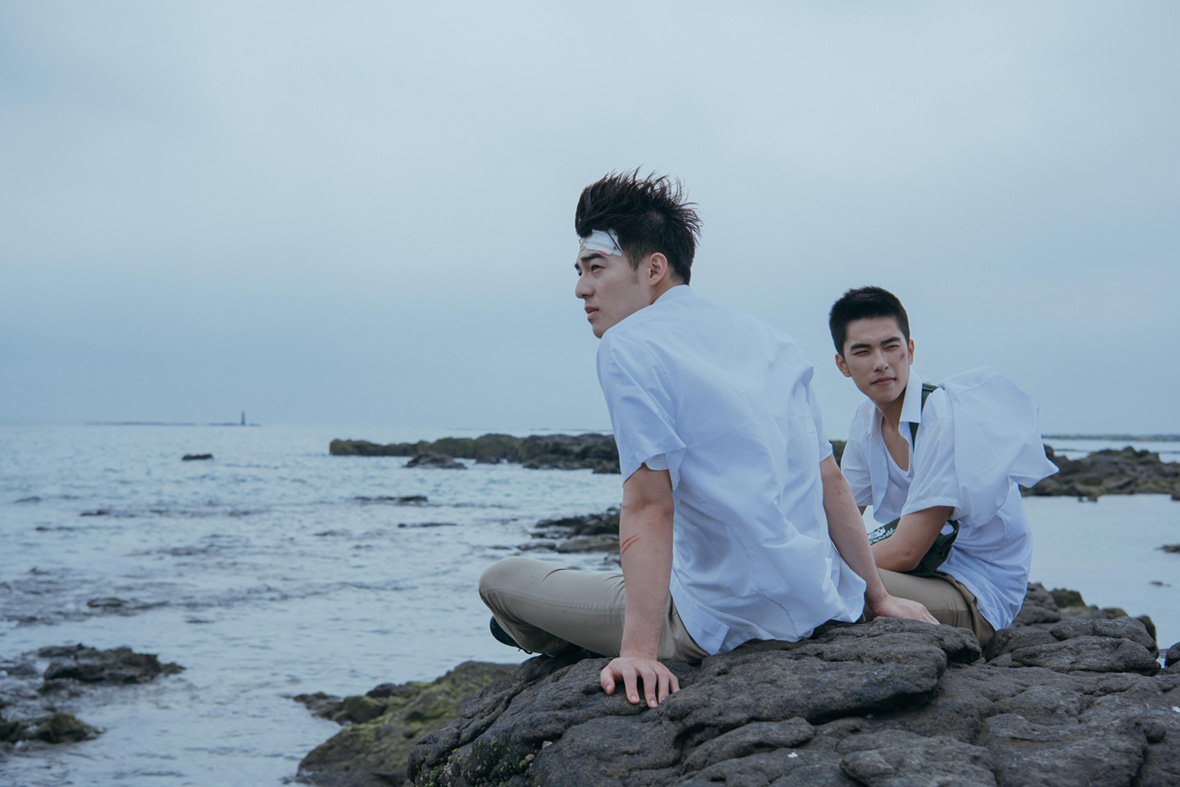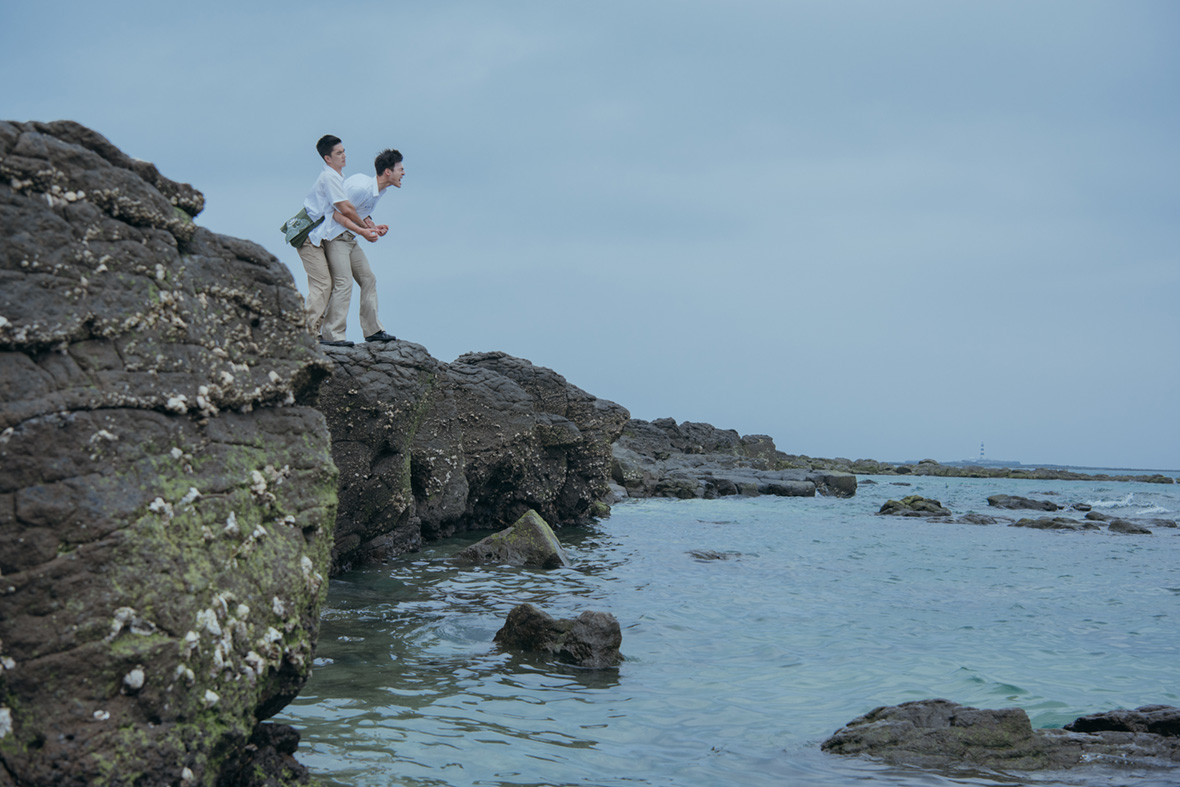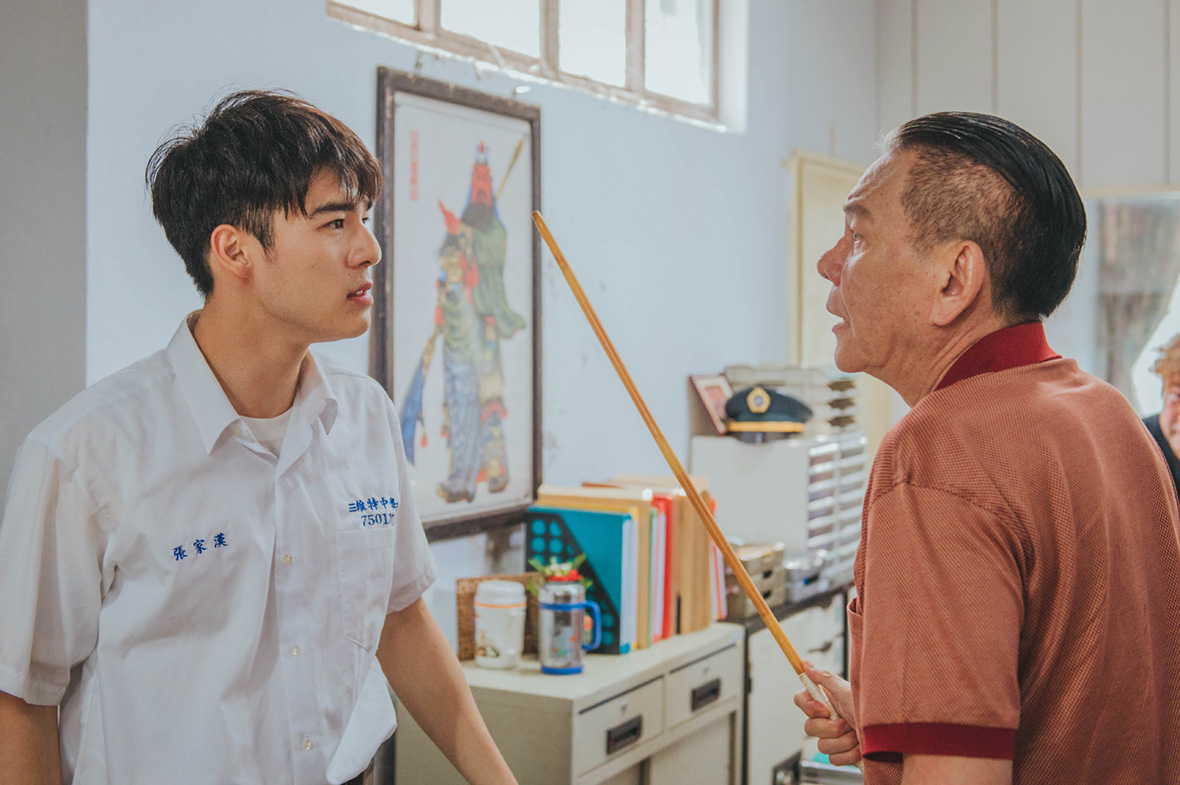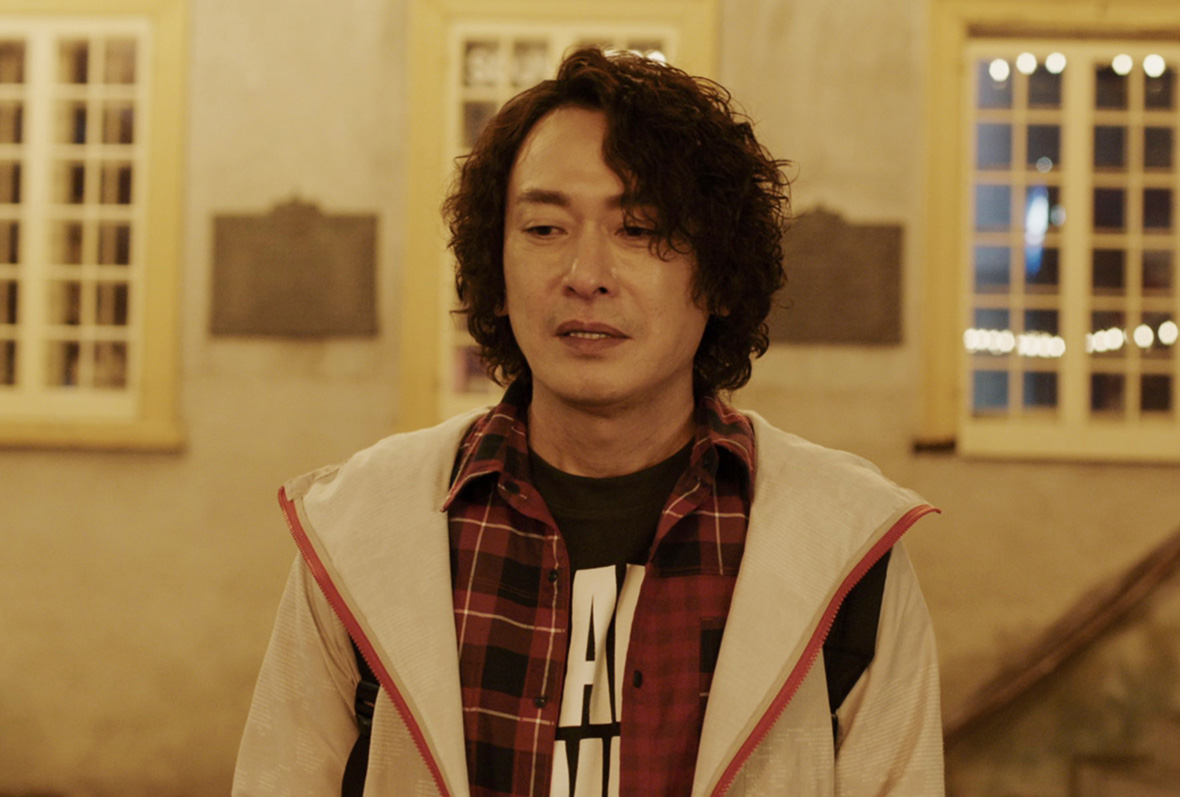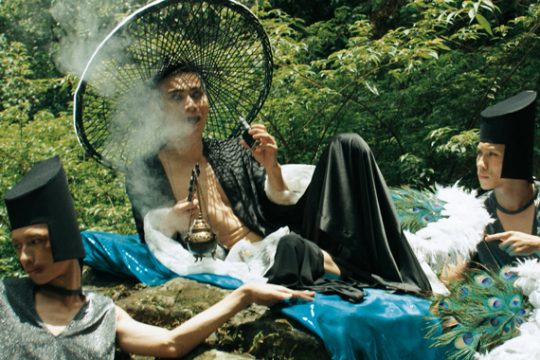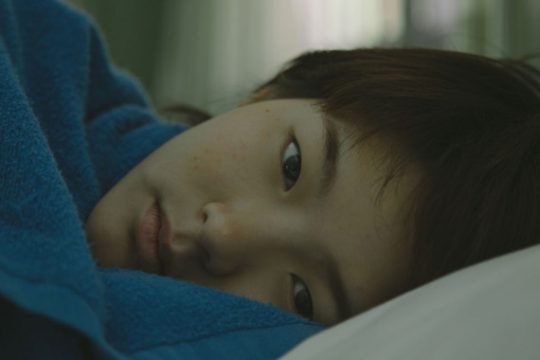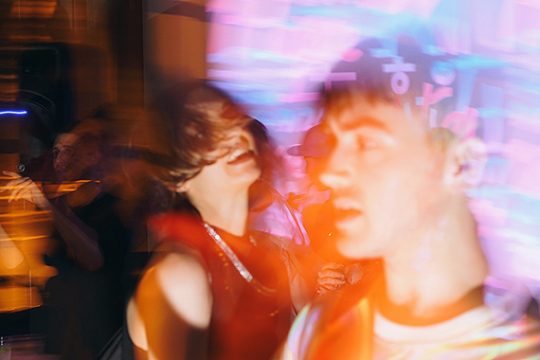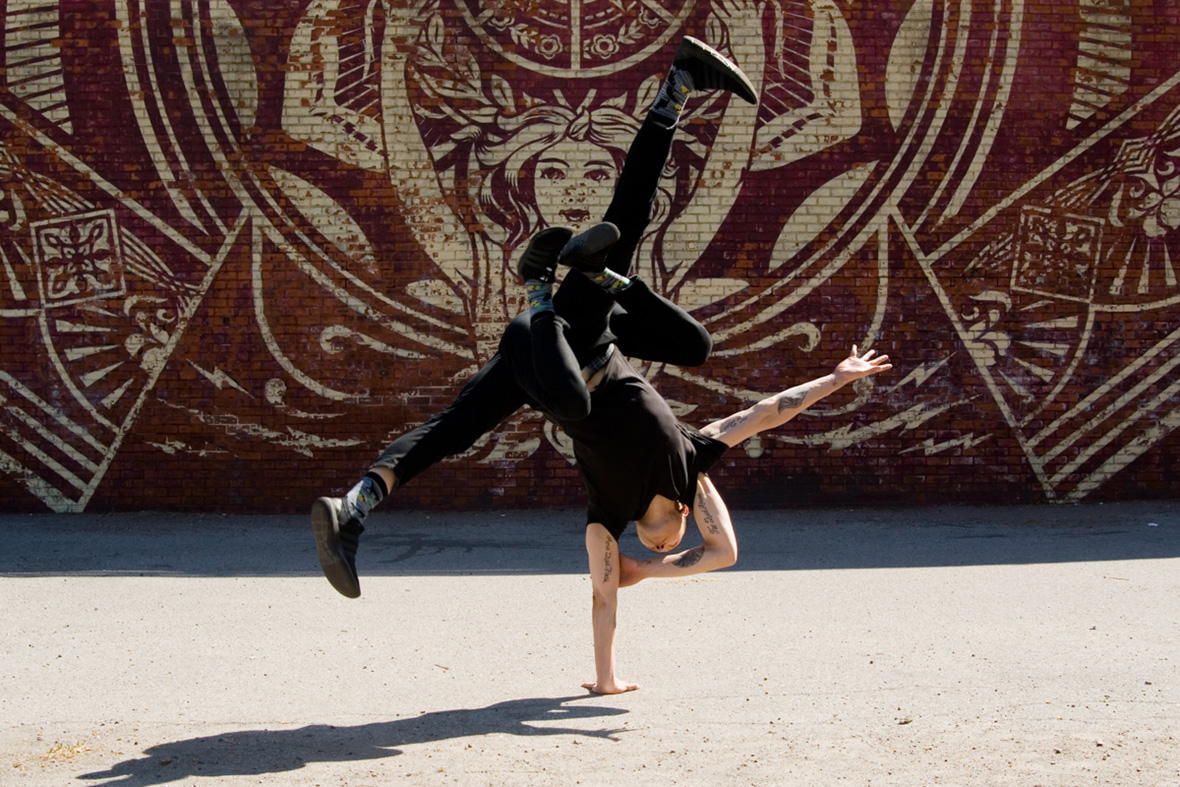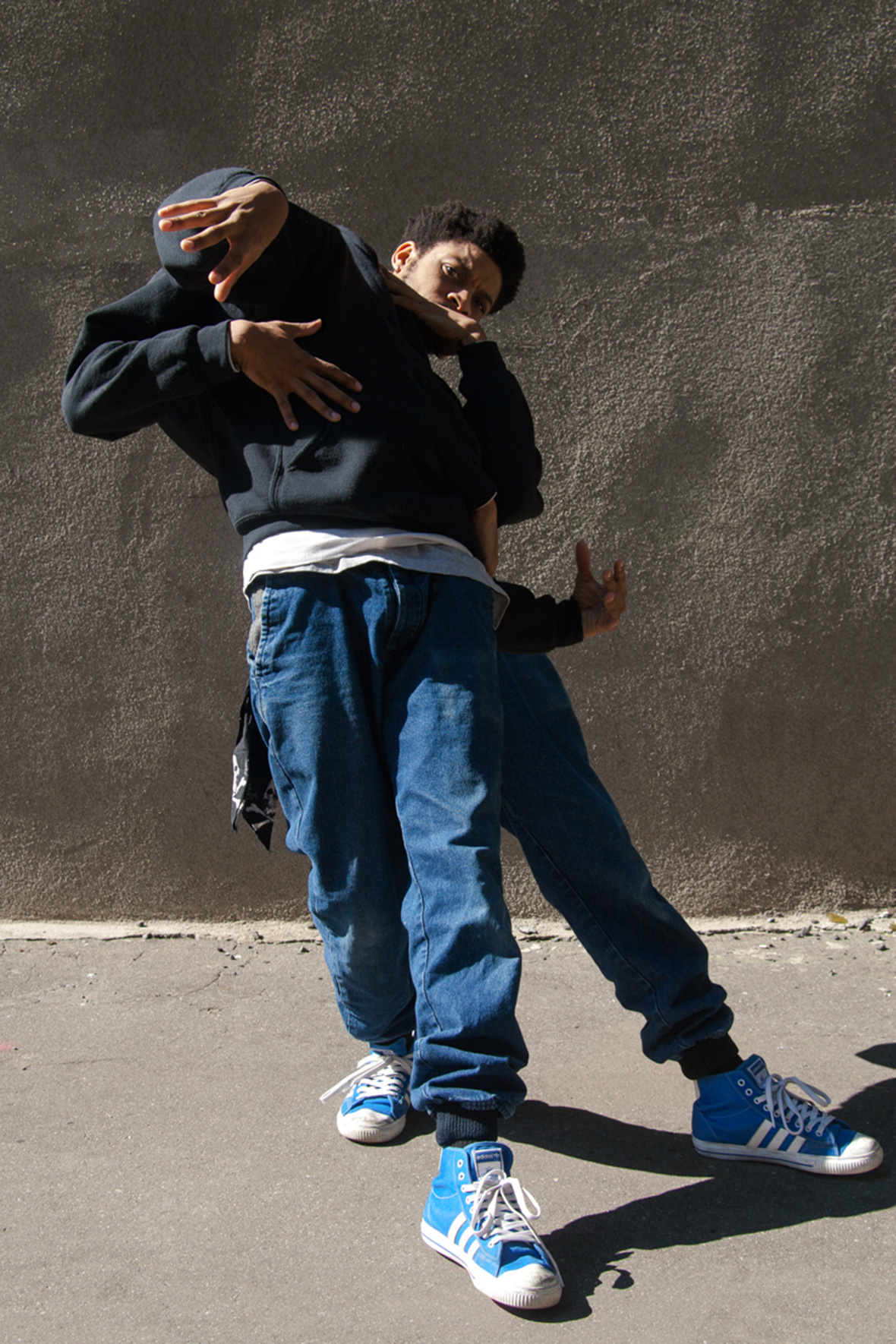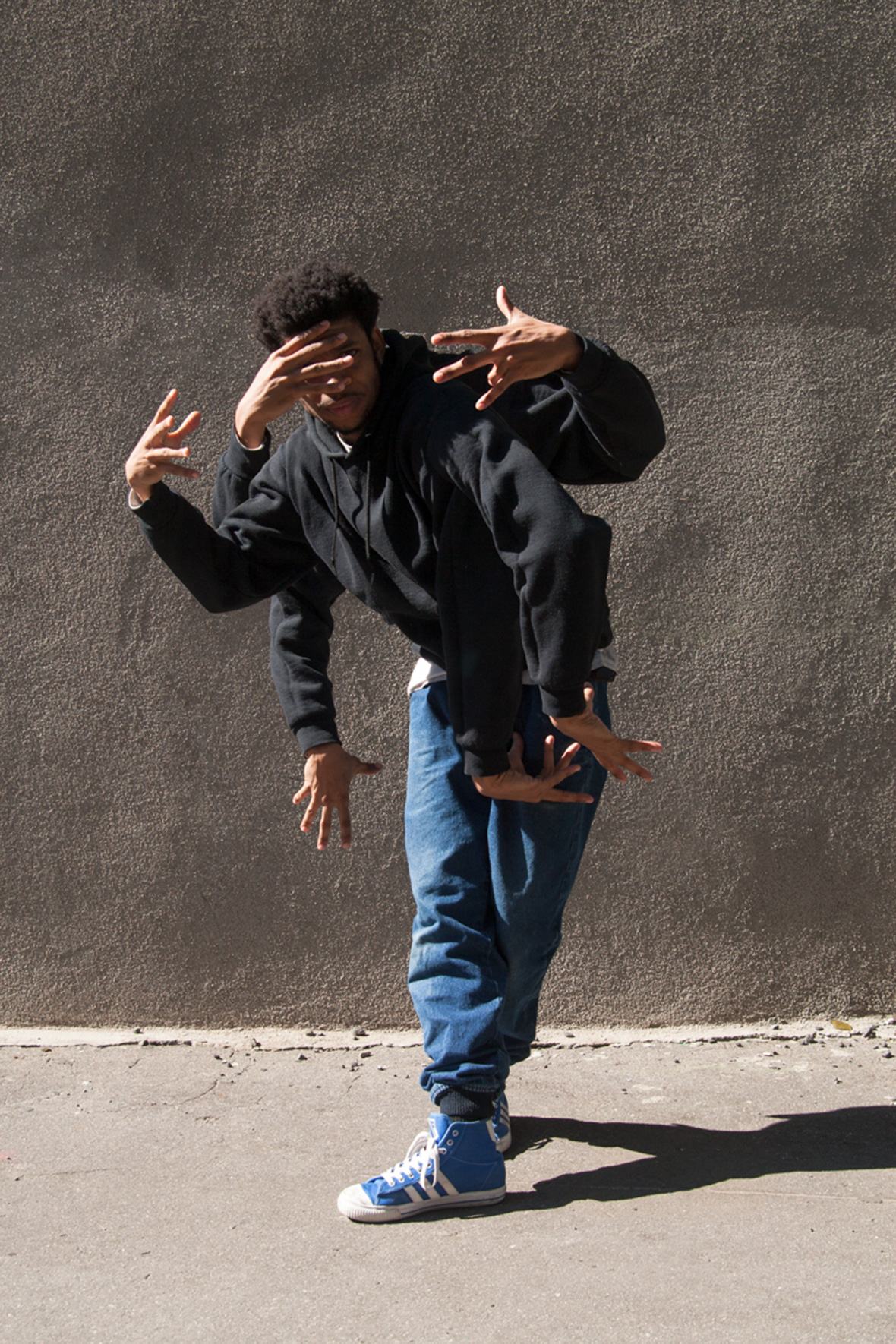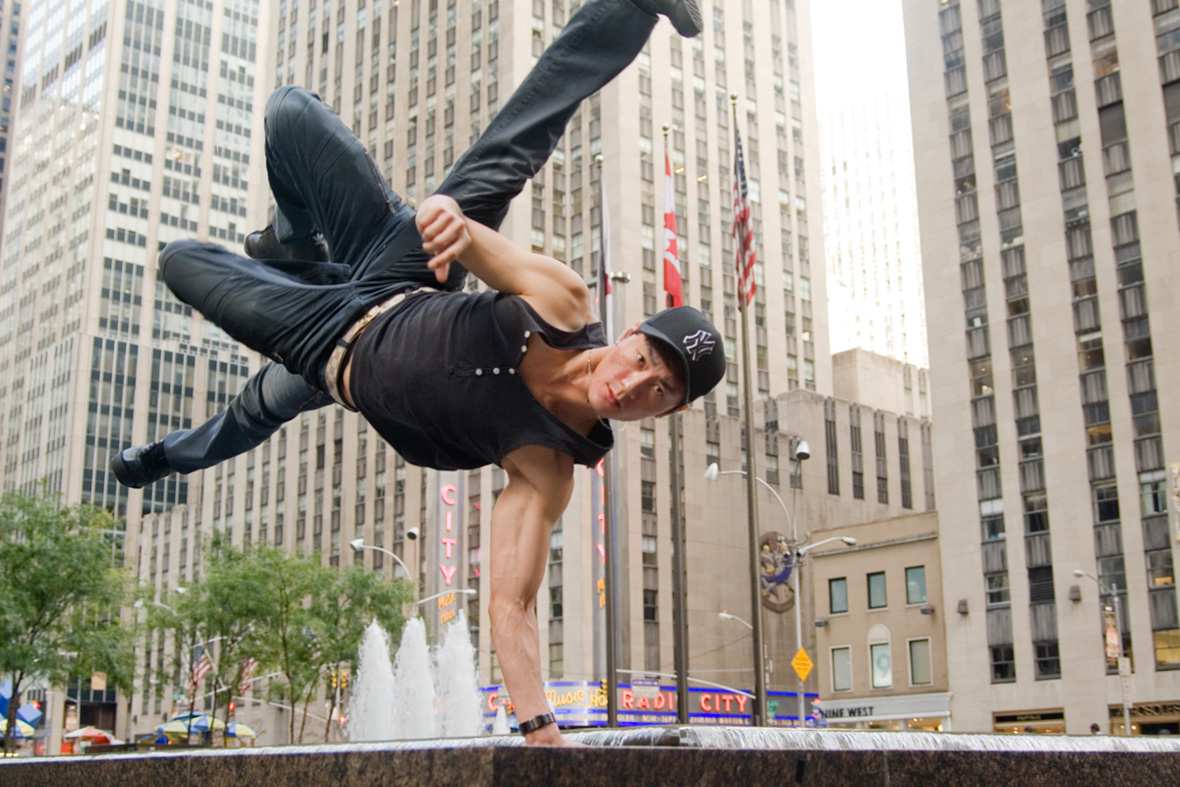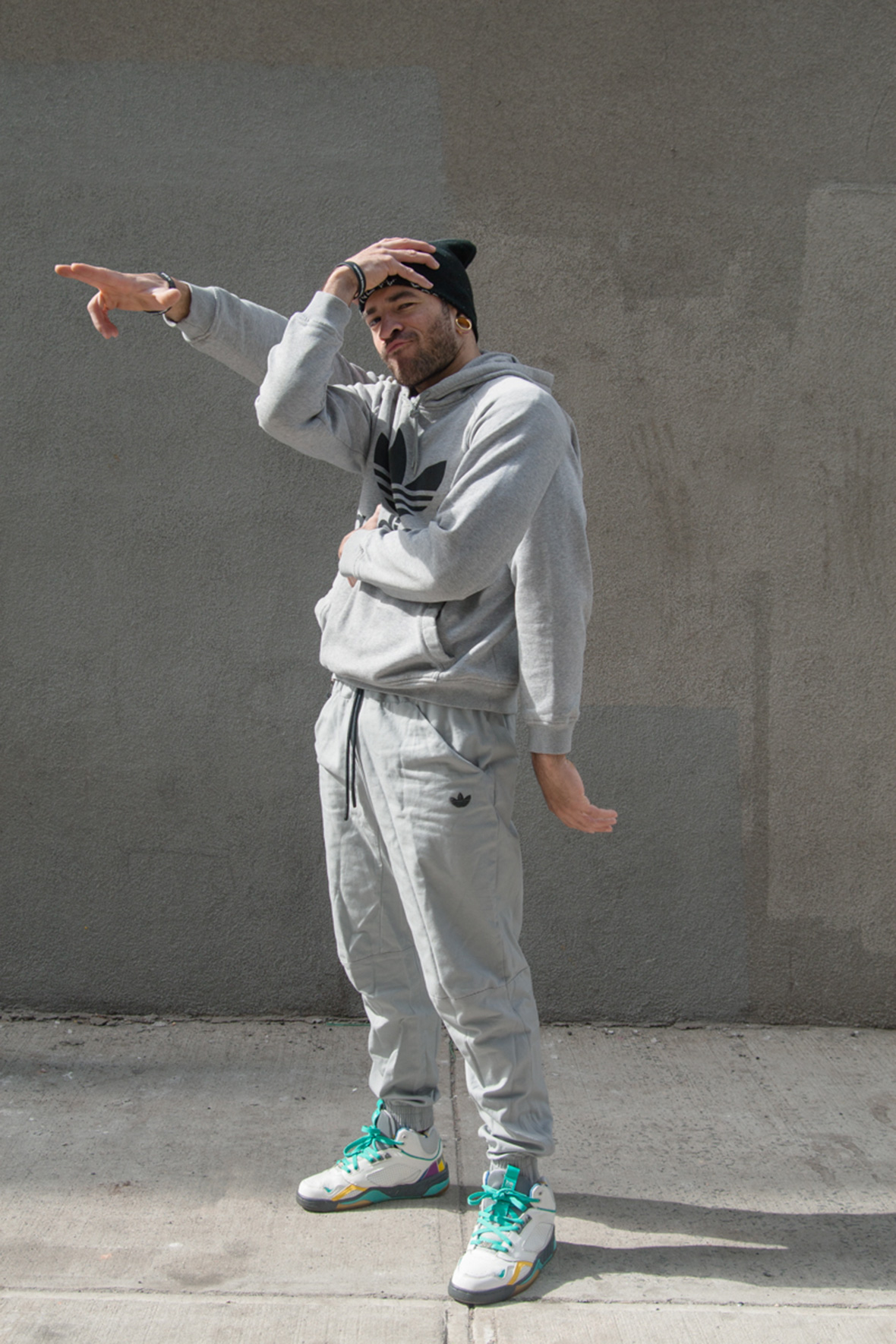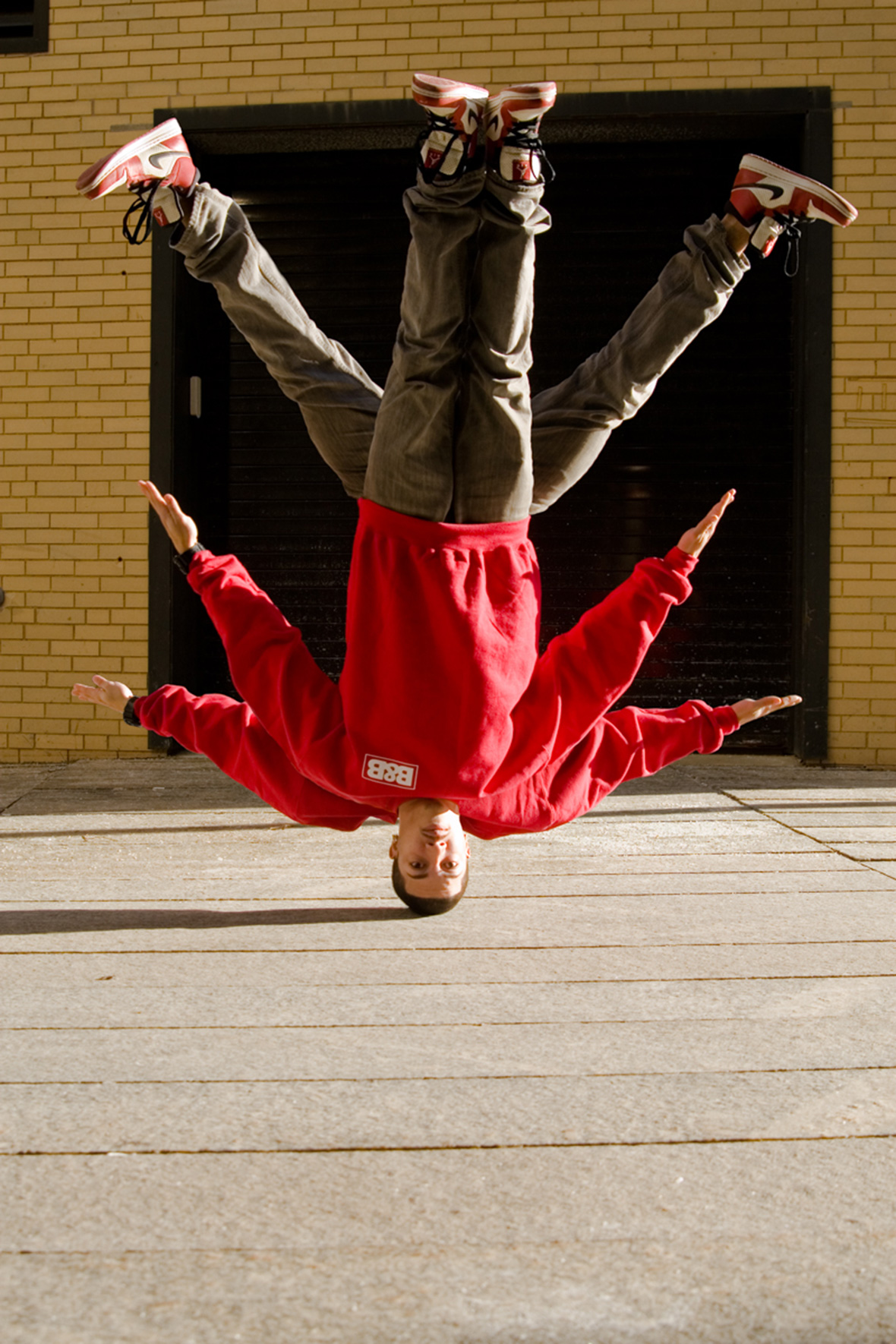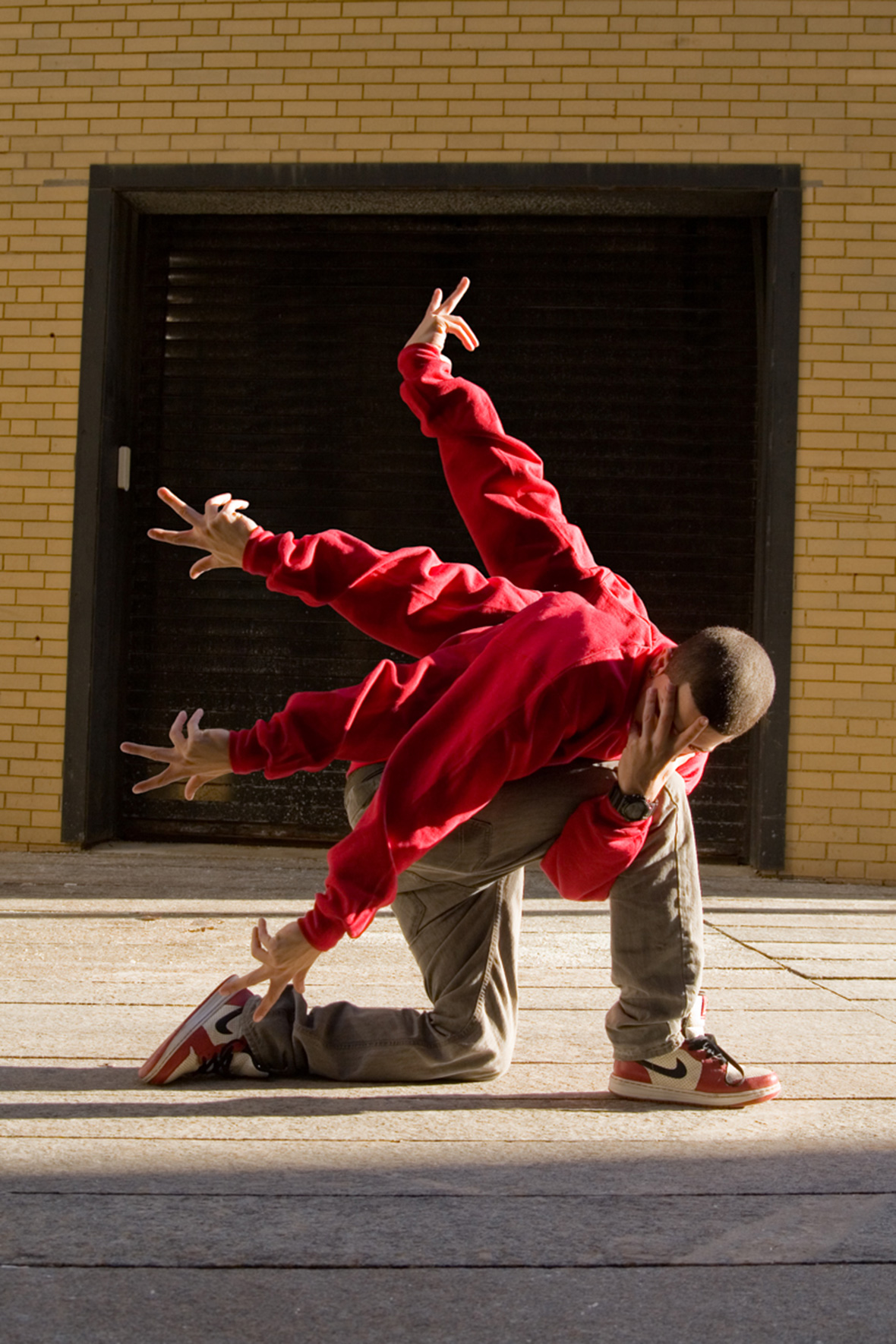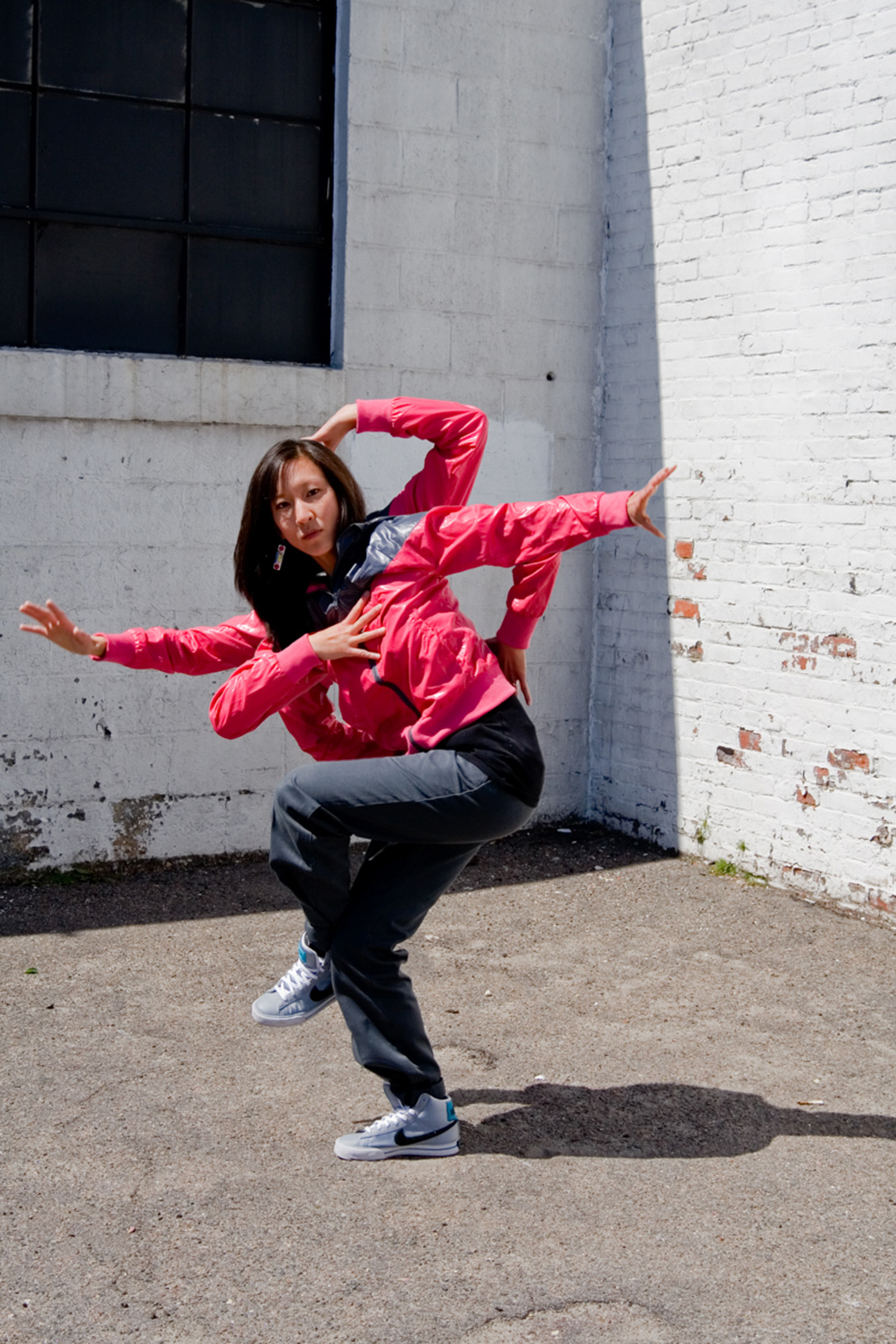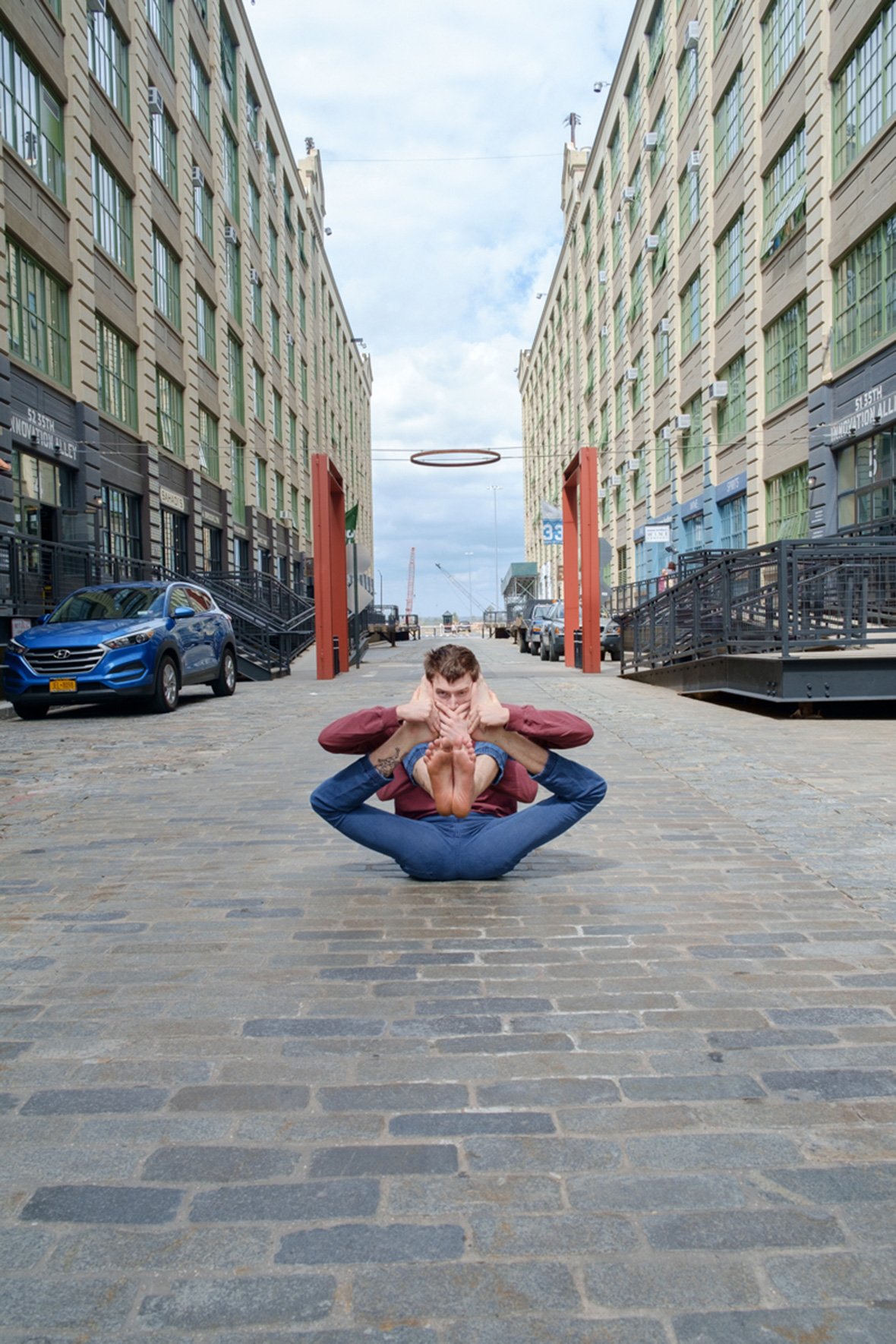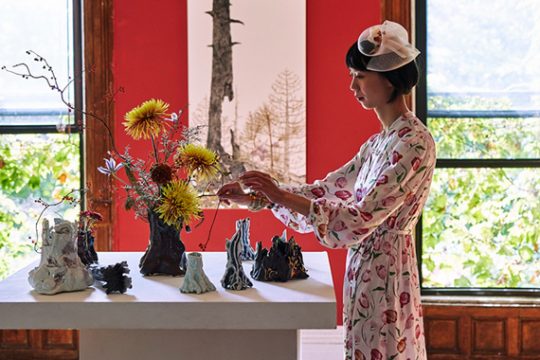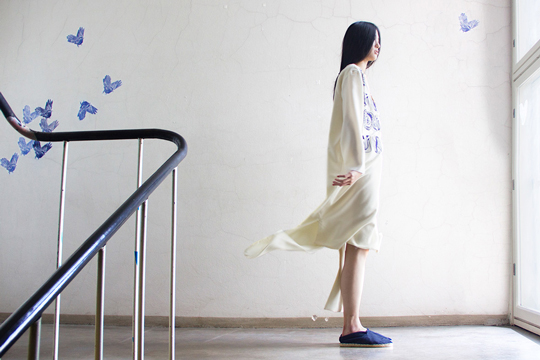无法观看?前往腾讯视频
It’s 1988, one year after the lifting of martial law in Taiwan. A-han (played by Chen Hao-sen) and Birdy (Tseng Ching-hua) have come to Taipei ostensibly to mourn the passing of the reform-minded president Chiang Ching-guo, but really to escape their strict, military-style Catholic school in Taichung. While exploring the capital, they spot a young male activist donning a wedding dress and shouting slogans in favor of same-sex marriage. He is then quickly carted off by plainclothes police, who, apparently familiar with his antics, address him as Chi Chia-wei. The takeaway for the young onlookers is clear: Taiwan may be changing, but there are limits to the new freedom.
The scene registers the seismic changes the island has gone through since. Today, the real-life Chi is widely regarded as the father of Taiwan’s gay rights movement, which saw a major breakthrough with the government’s historic legalization of same-sex marriage last year. While the scene itself is fictional, Chi, who was consulted for the film, was indeed demanding equal marriage as early as 1986, with his advocacy for sexual minorities and those living with HIV resulting in multiple arrests. These limits on self-expression are, unfortunately, lessons that A-han and Birdy too must learn repeatedly in Liu Kuang-hui’s film Your Name Engraved Herein (2020), which had its domestic premiere at the Taipei International Film Festival last month.
1988 年,台湾解除戒严一年后,阿汉(陈昊森饰)和 Birdy(曾敬骅饰)前往台北,表面上是为了追悼逝世的总统蒋经国,实际上只是想摆脱原来在台中天主教学校军事风格的生活。在台北,他们看到一名年轻的男子穿上婚纱,高喊着支持同性婚姻的口号。但是,很快他就被便衣民警押走了。民警显然已经很熟悉他,直接称呼他的名字“祁家威”。看到这一幕,这两名年轻人明白:虽然台湾正在变革中,但人们对新的自由思想尚未真正接受。
这一幕见证了台湾岛上所经历的翻天覆地的变化。如今,现实生活中的祁家威被称为台湾同志权利运动之父。去年政府将同性婚姻合法化也成为了台湾同志平权运动的重要突破。祁家威是这部影片的顾问,虽然这个场景本身是虚构的,但他确实早在1986年就开始呼吁同志婚姻平等权利,也多次因为为性少数群体和艾滋病毒感染者发声而被捕。影片中,两位少年一次次地遭遇周围社会对这种自我表达的压抑。这部电影《刻在你心底的名字》(2020年)由柳广辉执导,上个月在台北国际电影节进行了首映。
On the outside, A-han is the more serious and sensible of the two friends. But he’s drawn to the wild personality of Birdy, who’s named after the eponymous protagonist of the 1984 American film. (Thematically, too, Your Name feels indebted to that picture of trauma, friendship, and longing for freedom.) Birdy’s eccentricity consistently lands him in trouble in his conservative school, earning him a caning on one occasion. When A-han delivers ointment for his wounds in the bathroom, the two are forced to hide in the stall as a homophobic attack is carried out against an effeminate student accused of ratting out band members for sneaking out after curfew.
阿汉是两个少年中个性更严肃和理智的一位,而 Birdy 张扬的个性深深吸引了他。Birdy 这个名字取自于 美国同名电影《鸟人》(1984)(与《刻在你心底的名字》和《鸟人》一样,表达了创伤、友谊、向往自由的主题。)。Birdy 的个性让他在保守的学校里总是陷入麻烦,其中一次还因此受到了鞭刑。当阿汉在浴室给他的伤口涂药膏时,正巧碰上一位娘气的学生被恐同人士攻击,两人只好躲进了隔间。这些施暴者因为怀疑男生告密乐队成员在宵禁后偷偷溜出去,而对他拳脚相加。


The recurrence of such violent, homophobic attacks forms the backdrop against which A-han and Birdy’s friendship plays out. A-han, for his part, silently wrestles with his disinterest in girls and fascination with Birdy. Birdy, meanwhile, is slowly being driven to the edge (at one point, quite literally) by a school that, despite the seismic social shifts occurring in the outside world, feels frozen in time. Through confiding in a Quebecois priest, Father Oliver (Fabio Grangeon), A-han finally acknowledges his feelings for Birdy just as Birdy finds a quirky girlfriend and begins to distance himself from his friend.
这些恐同暴力攻击事件成为了笼罩在阿汉和 Birdy 二人友谊之上的阴影。阿汉暗自挣扎于对女孩的冷淡和对 Birdy 的迷恋之中。虽然整个社会正处于变革的巨浪中,这间学校却始终一成不变,保守落后,一步步将 Birdy 推向崩溃的边缘。而阿汉在向来自魁北克的神父 Oliver(Fabio Grangeon 饰)倾诉过后,终于承认自己对 Birdy 的感情,但与此同时,Birdy 却结识了一个个性独特的女友,并因此开始疏远他。

Your Name shines most in its depiction of the brutal, parochial world of the boarding school itself and the plight of the students who must navigate it. In one of the most moving scenes, A-han approaches a student long bullied for his effeminacy. The pair stand in front of a stained-glass window as A-han, projecting, asks the student why not seek help instead of accepting his desires and mistreatment at the hands of his classmates. With an air of gentle, tired resignation, he replies that he’s always liked boys—“Nothing has changed, and it never will”—, then leans close to A-han to kiss him. A-han grabs his neck to stop him; unfazed and unapologetic, the boy politely thanks him for his words.
《刻在你心底的名字》聚焦于寄宿学校残酷、狭隘的世界,以及挣扎于其中的学生所面临的困境。在影片中最感人的场面之一,阿汉找到因为外表娘气而被长期霸凌的学生。两人站在彩色玻璃窗前,阿汉问被霸凌的学生为什么不寻求帮助,而逆来顺受、忍受同学的霸凌。男孩微弱、疲倦地叹息了一声,说自己一直都喜欢男孩——“从来没有改变,以后也不会”——话音刚落,旋即倾身靠近阿汉想亲吻他。阿汉抓住他的脖子阻止了他;但男孩泰然自若,还礼貌地感谢了阿汉。

The film struggles in its final stretch, however, where the now middle-aged pair of friends meet once again in Quebec after Father Oliver’s passing. Plot holes, strained dialogue, and a CGI bird that will forever be burned into this reviewer’s brain distract from the director’s larger vision and points. The change of setting, meant to highlight the enormity of the social changes in the preceding years and bring to light revelations about the priest’s own struggle with his sexuality, feels both unnecessary and abrupt. A scene at Niagara Falls is perhaps intended to evoke the classic Happy Together (1997), but the cinematographer is no Christopher Dolan.
影片结尾部分处理得略有不足。已经人至中年的两位好友在 Oliver 神父去世后,在魁北克再次相遇,但一些情节漏洞、不自然的对白和过分抢眼的 CGI 绘画飞鸟,分散了导演想表达的理念和观点。环境转变本来是为了强调这些年来社会的变化,并揭露神父关于自己性取向的挣扎,却显得多余和突兀。而尼亚加拉大瀑布的一幕也许是想致敬经典同志影片《春光乍泄》(1997),但摄影师却毕竟不是杜可风。
All the same, Your Name is worth it for those moments of trepid intimacy that capture the confusion and beauty of youth, while its attempt to make sense of these experiences from the perspectives of two contemporary middle-aged gay men is admirable. As Liu tells it, this is his own story, right down to his real-life priest’s belated coming out. It ends not simply as a celebration of youth, then, but also as a meditation on lost time. Given the advances of Taiwanese and global LGBTQ communities in recent years, perhaps there’s now a chance for many of these individuals to make up for some of that lost time. No less importantly, though, young queer people in today’s Taiwan will grow up with stories like Your Name, and with hard-won freedoms that their predecessors could have only dreamed of.
尽管如此,《刻在你心底的名字》刻画的暧昧亲密的情景,依然生动地呈现了青春的困惑和年轻的美。试图从两个当代中年男同性恋者的角度来讲述这些经历也令人印象深刻。正如柳广辉所说,这是他自己的故事,包括在现实生活中向神父出柜的故事。这部影片不仅是对青春的颂歌,也是对逝去时光的冥想。近年来,随着台湾和全球各地 LGBTQ 社区的进步,也许对许多人来说,现在是弥补过去那些遗憾的机会。同样,今天的台湾年轻同性恋者将能够看着《刻在你心底的名字》这样的故事成长,拥有他们先辈所梦寐以求、来之不易的自由。
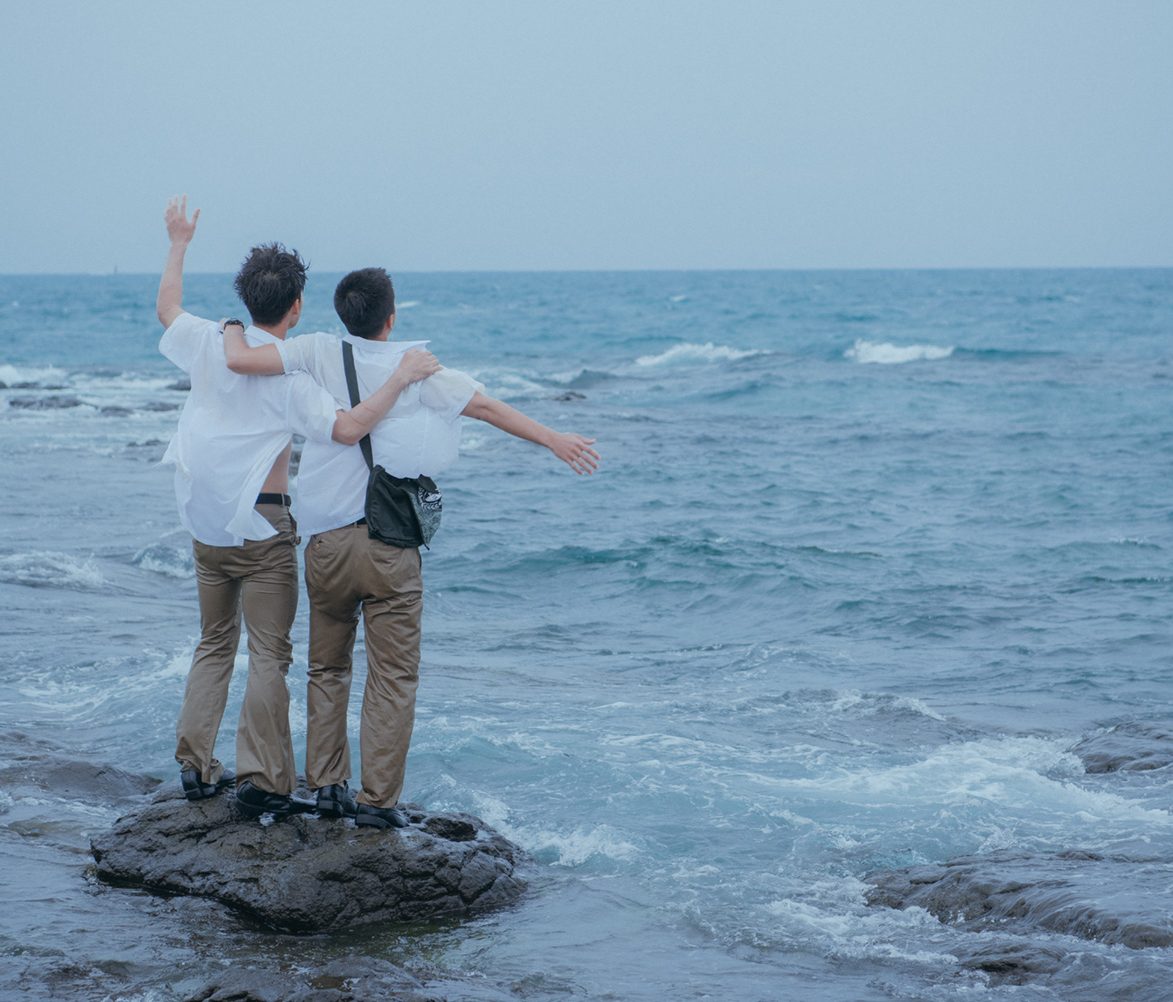
Like our stories? Follow us on Facebook and Instagram.
Facebook: ~/YourNameEngravedHerein
Contributor: Brandon Kemp
Chinese Translation: Olivia Li
Images Courtesy of Oxygen Film

